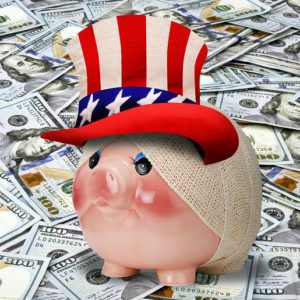Philadelphia may have the best football and baseball teams in America right now, but when it comes to inflation, the Delaware Valley is in the same league as the rest of the U.S.
In September, America’s annual rate of inflation was 8-2 percent, despite major increases in interest rates by the federal reserve designed to cool off red-hot price hikes.
The U.S. Labor Department released its September inflation report, with more bad news for Americans suffering from historic price hikes on everything from groceries to home heating fuel. Inflation in the past year was worse than expected with increases in gasoline (+18.2 percent), fuel oil (+58.1 percent), electricity (15.5 percent), groceries (+13 percent), meat, poultry, fish +(7.7 percent), milk (+15.2 percent), eggs (+30.5 percent), baby food (+11.8 percent), airline fares (+42.9 percent). At the same time, real average hourly earnings were -3 percent.
That is certainly the case for area restaurants, said Ben Fileccia, senior vice president of strategic engagement of the Pennsylvania Restaurant and Lodging Association, He told DVJournal inflation has sent prices for staples like frying oil flying up 100 percent. The cost of chicken wings has doubled or tripled, and labor costs are also up 10 to 15 percent as restaurants struggle to retain well-qualified workers.
“Restaurants are limited in raising menu prices because of a delicate balance between price increases and the low 2 to 7 percent profit margin that exists in the industry. The intent is to provide customers with a pleasant dining experience without it costing an exorbitant amount,” he said.
Fileccia added the pandemic lockdowns effects are still lingering as well as restaurants opened and closed. “It is taking time to regain losses for the industry, perhaps as much as a two-year process to recover, with certain unpredictability. In light of this mitigation, there has been a 20 percent loss in the number of restaurants closed in Pennsylvania, above the national average.”
He added the $1 billion Federal Restaurant Revitalization Fund did help restore some restaurants, but only 30 percent of restaurants in the commonwealth received that funding.
The housing market has also been hit by inflation and efforts to bring it under control.
Mortgage rates are currently at their highest levels in almost two decades, approaching seven percent. That has slowed home purchases, and in some cases caused prices to fall. Some real estate experts think house prices and rents will fall throughout the U.S. in the coming several months.
Delaware Valley real estate market home values have risen 13.7 percent over the past inflationary year. Zillow Home Value Forecast predicts they will rise another 8.7 percent in the next 12 months.
The real estate market has shrunk because there are fewer listings and even fewer buyers. Debbie McCabe, a realtor with Berkshire Hathaway Home Services Fox & Roach Realtors, said “the housing inventory right now is at an all-time low. There are buyers still out there, but only if they can afford it.”
First-time home buyers are in the wait-and-see mode, pausing. But the second and third-time buyers are downsizing and may need a mortgage.
“They are seeking the top dollar for their 2-3 bedroom homes while finding the best mortgage interest rate deal. It’s the real estate cycle,” she said.
McCabe said we are now facing a “new normal” due to high inflation and lower inventory available. However, rental prices for property are higher now, but more stable in the Delaware Valley region than in most parts of the country.
“I believe the outlook is positive because people are adjusting to higher interest rates. The desire to move to different housing has never stopped, although people remain cautious. Working from home also has a significant impact on home ownership. People still value home ownership. That idea continues,” she noted. She predicted the spring 2023 market will be strong.
Please follow DVJournal on social media: Twitter@DVJournal or Facebook.com/DelawareValleyJournal


